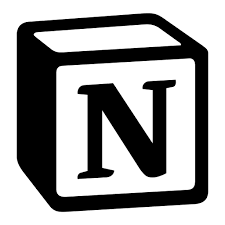Explore the programming language Julia, which is suited to machine learning applications, and other details of the most popular languages today.

The August 2023 TIOBE Programming Community Index is out, and the programming language Julia has reached the top 20 for the first time. Julia is a relatively new programming language — it was formalized 13 years ago — making its rapid ascent particularly notable. TIOBE Software ranks 100 programming languages by their popularity with the programming community.
Jump to:
Julia is especially suited to machine learning
Julia’s rise into the top 20, at number 20, is remarkable because this is the first time the relatively new programming language has entered the upper echelons of popularity in the index. Julia is often used for machine learning, data science and mathematical computation, TIOBE Software CEO and list proprietor Paul Jansen pointed out. However, that doesn’t make it unique — many other programming languages in the top 20, such as Python, R and MATLAB also come from those fields.
Jansen says the difference is in usability: “Julia is faster than Python, more suitable to write large systems in it than R and less expensive than MATLAB,” he wrote. “So, speed, scalability and being open source make Julia an attractive alternative.”
SEE: Getting started with Julia: A list of resources (free PDF) (TechRepublic)
There are some challenges to using Julia. Jansen said, ” … Julia requires more programming skills than the other 3 languages mentioned, so it is really interesting to see whether it can keep its position between the big boys.”
Julia’s continued rise — it was on the TIOBE radar last month at number 24 — is part of the trend of data science and mining use cases, Jansen told TechRepublic. Julia was developed in 2012 by Dr. Viral Shah, Alan Edelman, Dr. Jeff Bezanson and Stefan Karpinski at MIT. It’s remarkable in part for its Just In Time compiler and support for a Read-Eval-Print loop, in which code lines are interpreted as they are written.
Julia is particularly good for machine learning because it boasts the SimpleChains.jl library, which is designed to speed up the creation of small neural networks such as the scientific machine learning networks used in healthcare data analytics.
Shifts in the top 10 list of programming languages
The top three programming languages on the index stayed steady between July and August, with Python, C and C++ maintaining the prime spots, respectively. C++ gained points in TIOBE’s ranking system, rising 0.49% points to its highest position since it entered the index in 2001. (The added points weren’t enough to nudge it to a higher numbered position, however.)
SEE: The complete top 10 list of programming languages from this month’s TIOBE Index and previous months in 2023 (TechRepublic)
Jansen chose C++ as the language of the year in 2021 due to it gaining the most popularity according to his popularity ranking math. At the time, he said C++ took the gold in part because ” … it is possible to develop fast and vast software systems (over millions of lines of code) in C++ without necessarily ending up in a maintenance nightmare.” Its consistent updates, such as the relatively recent C++20 publication, also likely contributed to its popularity, Jansen said.
SEE: The C++ Programming Bundle: Beginner to Expert (TechRepublic Academy)
Further down the top 10 list, there hasn’t been a lot of movement between July and August. JavaScript and SQL both gained points, although not enough to change their rankings. Assembly language entered the top 10 at number nine, while MATLAB fell off its number 10 spot in July to number 13 in August and was replaced by PHP.
What is the TIOBE Programming Community Index?
The TIOBE Programming Community Index is a leaderboard of programming languages ranked by TIOBE’s points system for the popularity of each language. The index is updated once a month. Ratings are determined by the community of engineers, courses and third-party vendors. Popular search engines such as Google, Bing, Yahoo, Wikipedia, Amazon, YouTube and Baidu are also used to calculate the ratings. TIOBE notes that the index doesn’t measure “the best” programming language or the language in which most lines of code have been written — rather, it’s a measure of general popularity and awareness.
TIOBE positions its index as a good tool for checking whether a professional programmer’s skills are still up to date or for making a strategic decision about what programming language one should adopt when building a new software system.
Source of Article



